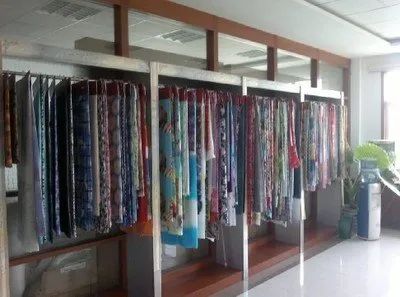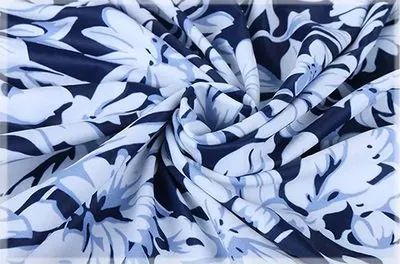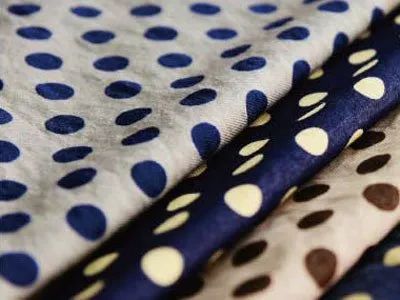Several common methods of transfer printing technology
Several common methods of Transfer printing technology
In the packaging and printing industry, transfer printing refers to a printing process that transfers dye to fabric through transfer paper. According to the sublimation characteristics of some disperse dyes, disperse dyes that sublimate at 150℃-230℃ are selected and mixed with slurry to make “color ink”. Then according to different design pattern requirements, “color ink” is printed on the transfer paper, and then the transfer paper with the printed pattern is in close contact with the fabric. Under controlled conditions of temperature, pressure and time, the dye is transferred from the printing paper to the fabric and enters the fabric through diffusion. Transfer printing includes sublimation, migration, melting and ink layer peeling. Among them, sublimation transfer printing is the most mature.
Sublimation method

This is the most commonly used method. Taking advantage of the sublimation properties of disperse dyes, use disperse dyes with a molecular weight of 250-400 and a particle size of 0.2-2 microns, together with a water-soluble carrier (such as sodium alginate) or an alcohol-soluble carrier (such as ethyl cellulose) and oil. Ink is made from soluble resin. The ink is processed on the transfer printing machine at 200℃-230℃ for 20-30 seconds to transfer the disperse dye to synthetic fibers such as polyester.
Sublimation generally goes through three processes: before the transfer process, all the dye is in the printed film on the paper, and the dye concentration in the printed fabric and air gap is zero. The size of the air gap depends on fabric construction, yarn count and transfer pressure. During the transfer process, when the paper reaches the transfer temperature, the dye begins to volatilize or sublimate, forming a concentration of volatilization between the paper and the fiber. When the printed fabric reaches the transfer temperature, the dye begins to adsorb on the fiber surface until a certain saturation value is reached. Because the transfer of dye from paper to fiber is continuous, the rate of adsorption depends on the rate of dye diffusion into the fiber. In order to make the dye diffuse in a directional manner, a vacuum is often evacuated on the underside of the object to be dyed, so that the dye can be directionally diffused and transferred. After the dyeing material is colored through the transfer process, the dye content on the paper is reduced, and some residual dye migrates into the interior of the paper. The amount of remaining dye depends on
The vapor pressure of the dye, the dye’s affinity for the slurry or transfer paper, and the thickness of the printed film. Sublimation method generally does not require wet treatment, can save energy and reduce sewage treatment load.
migration method

The dyes in the transfer ink layer of the paper are selected based on the properties of the fibers. First, the fabric is padded with a mixture of color-fixing aids and paste, then the dye is transferred from the transfer printing paper to the fabric, and is fixed by hot-pressure migration in a wet state, and finally steamed and washed. Wait for moisture treatment. During the dye transfer process, more pressure is required between the fabric and the transfer paper.
Melting method
The ink layer of transfer paper is based on dyes and waxes. The ink layer is embedded into the fabric through melting and pressing, so that part of the ink is transferred to the fiber, and then corresponding post-processing is performed according to the properties of the dye. When using the melting method, greater pressure is required. As the pressure increases, the dye transfer rate increases.
Ink layer peeling method

Using ink that can produce strong adhesion to fibers when exposed to heat, the entire ink layer is transferred from the transfer paper to the fabric under relatively small pressure, and then the corresponding color fixation treatment is performed according to the properties of the dye.
Transfer printing is not only suitable for synthetic fiber fabrics, but also for printing pure and blended fabrics of natural fibers. It has the following advantages: short process flow, the finished product is ready after printing, without the need for post-processing processes such as steaming and washing; simple equipment, low investment, small floor space, and low energy consumption; fine patterns, rich and clear layers, high artistry, and three-dimensionality It has a strong sense, which is unmatched by ordinary printing methods. It can print patterns in the style of photography and painting; the printing color is bright, and during the sublimation process, the tar in the dye remains on the transfer paper and will not contaminate the fabric; the authenticity rate is high and no need With flowers, multiple sets of color patterns can be printed at one time. Flexibility. After the customer selects the pattern, it can be printed out in a short time. In addition to printing on a piece of cloth, they can also perform transfer printing on finished clothing, such as partial printing on the collar, cuffs, and pockets of a coat.
Transfer printing also has some shortcomings. For example, 80% of transfer printing is used for polyester fabrics, 10% is used for polyester blended fabrics, and 10% is used for acrylic, nylon, acetate and other fabrics. For natural fiber fabrics, large-scale production has not yet been carried out, and the scope of application is limited. In addition, a large amount of paper needs to be consumed. In addition to transfer paper, paper lining is also required, so the paper consumed is…The volume is twice that of printed cloth, and the disposal of remaining paper is also a problem. In addition, the production efficiency of transfer printing is low. The output of a transfer printing machine is 3-4m/min, and the higher one is only about 8m/min, which is only suitable for small batches and multiple varieties.







